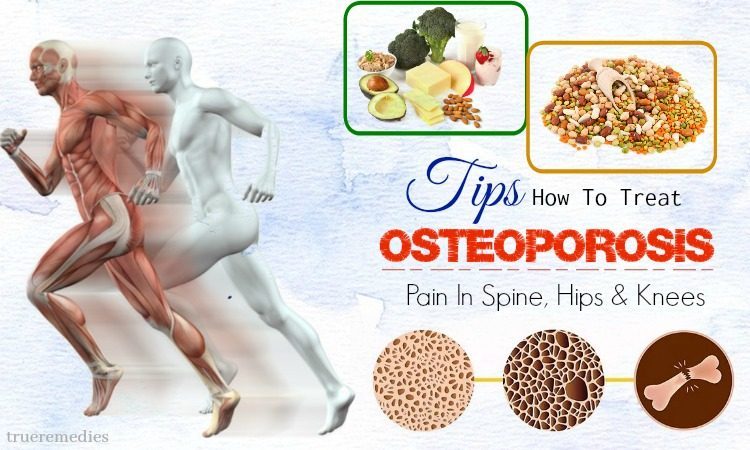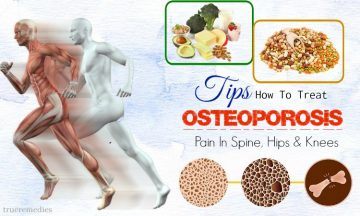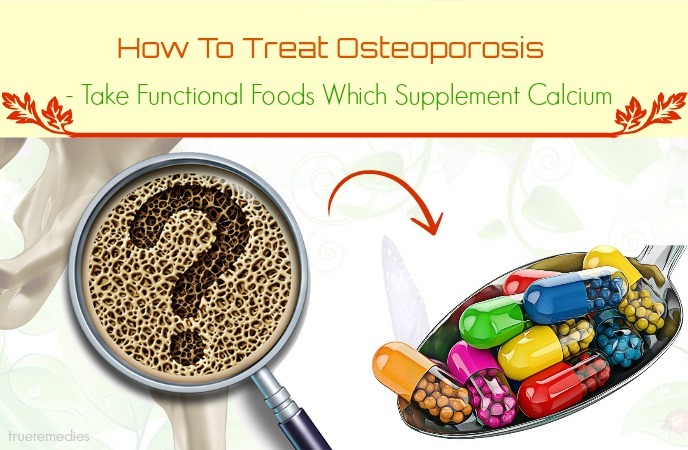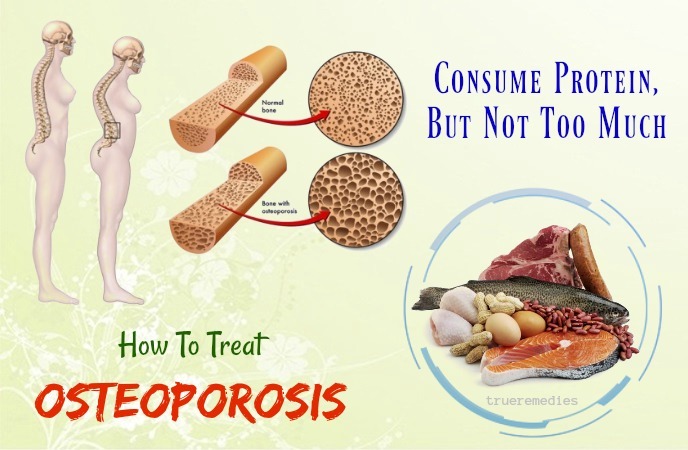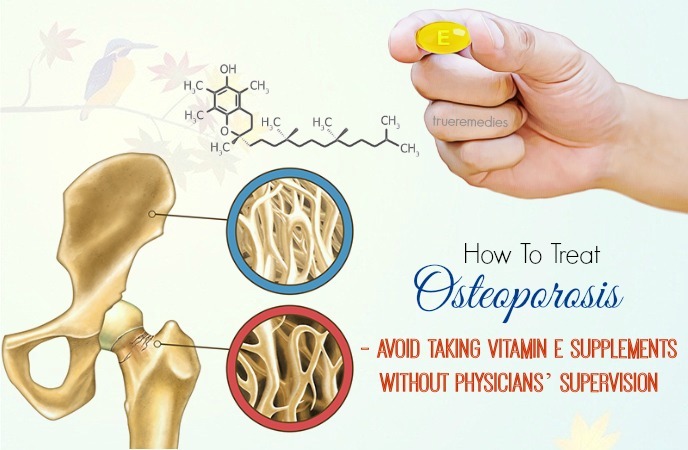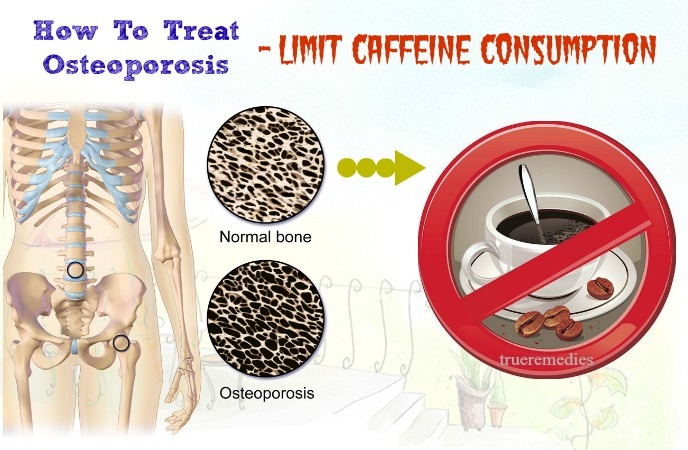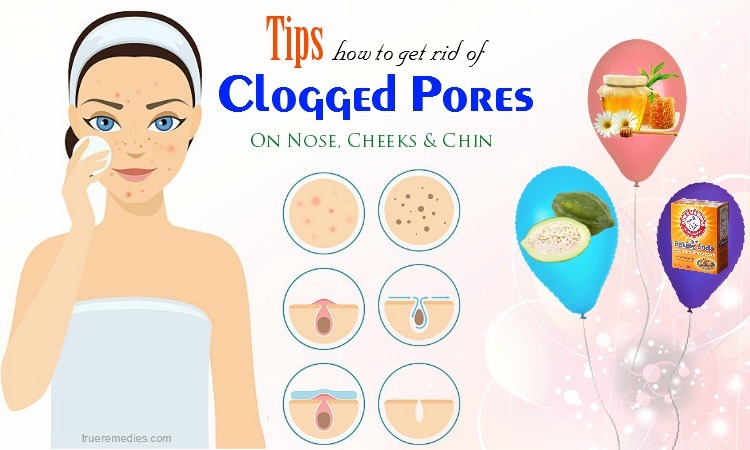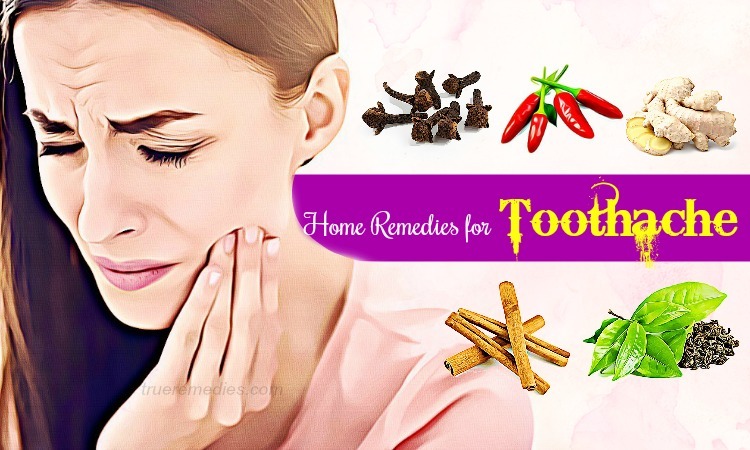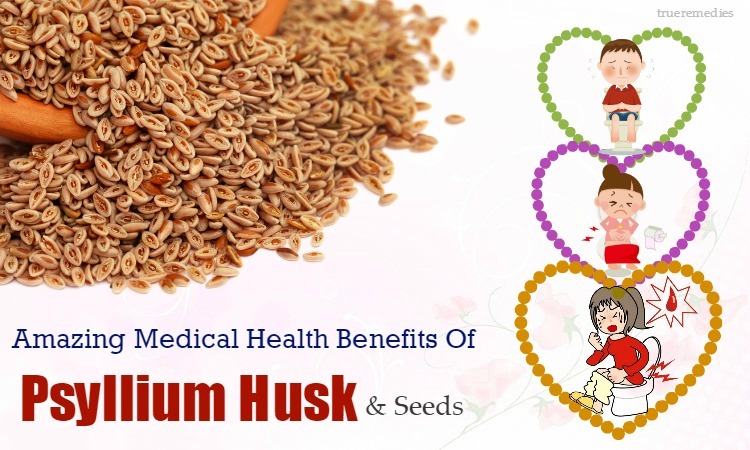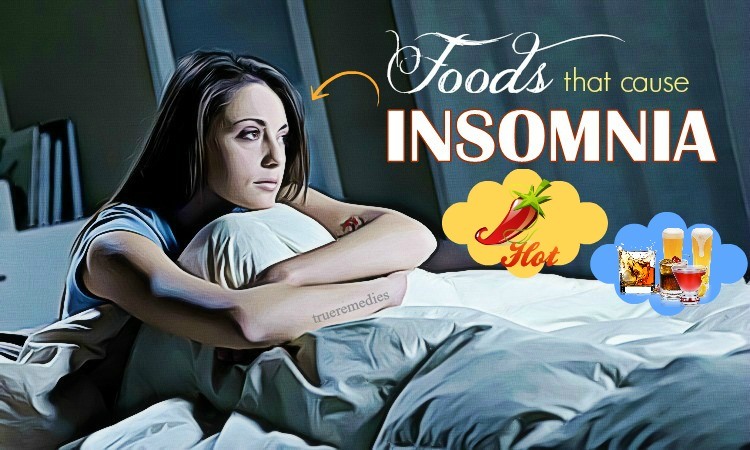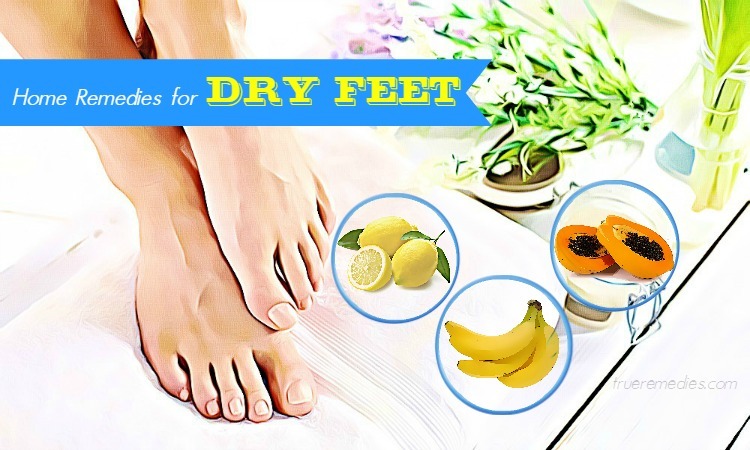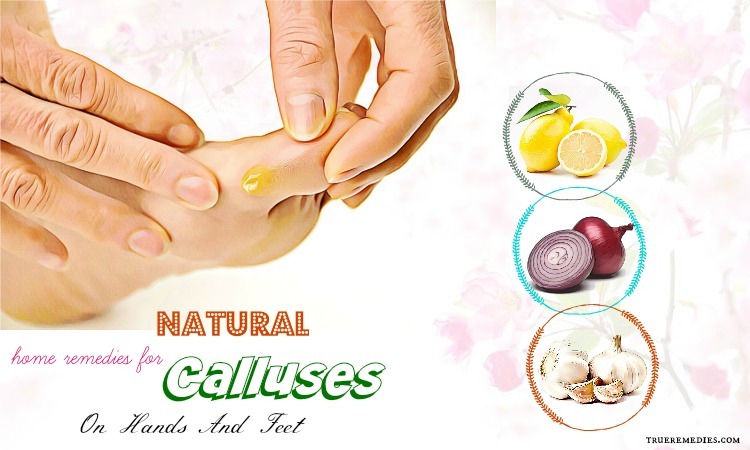Updated: 11/09/2019
Contents
Today, osteoporosis is becoming more and more common. When you get this disease, the bones are very fragile, especially the hip, the spine and the wrist bone. As you get older, your bones will naturally weaken, but osteoporosis speeds up this process. There are some risk factors for osteoporosis such as age and race that you cannot change. Fortunately, there are many ways that you can do to slow down bone loss, treat and prevent osteoporosis. This article will introduce you to such effective ways on how to treat osteoporosis pain in spine, hips and knees at home. Because they affect your bones, you need to keep doing them for a long time. But firstly, to determine your exact condition, let's look at the information about osteoporosis.
What Is Osteoporosis?
Osteoporosis is a phenomenon in which the bone continues to thin and the density of bone in the body decreases gradually. This makes the bones more brittle. That's why bones are so vulnerable. When you have osteoporosis, you are prone to bone fractures even with minor injuries. Common signs of this disease are weight loss and back pain. Osteoporosis is a major cause of fractures in postmenopausal women and the elderly. Osteoporosis fractures occur most frequently in the bones of the hips, spine and wrist, but any bone can be affected. Some broken bones may not heal, especially when the condition occurs in the hip.
Previously, it was thought that osteoporosis is a disease of old age. However, today, the disease can occur in women 40-45 years old. The human body from birth to adulthood and old age always takes place in two processes: bone formation and bone destruction. In young people, the process of bone formation occurs more strongly, the longer the bones, the higher the body. At puberty, the growth rate of bone is greatest. For the elderly, the process of bone formation occurs slowly and the process of bone destruction occurs rapidly. This makes them very susceptible to osteoporosis. The T-score is a measure of the patient's bone density as compared to that of a healthy 30-year-old healthy adult:
- T-score> -1: Normal
- -2.5 <T-score <-1: The bone density is decreasing
- T-score <-2.5: Osteoporosis
- T-score <-2.5: Severe Osteoporosis
Osteoporosis is a silent disease that is only detected until the bone is broken. Many people think that osteoporosis is a natural and unavoidable part of old age. However, health professionals now believe that osteoporosis can be prevented. In addition, people who have osteoporosis can still take steps to prevent or slow the progression of the disease and reduce the risk of fractures in the future.
What Are Common Causes Of Osteoporosis?
Here are common causes of this disease:
TrueRemedies Partner Solutions

Need a Help from the Leading Expert Online, Available 24/7?
They’re all here and ready to answer your questions online or by phone. Keep asking questions until you get the answer you need.
- Age
Age issues are one of main causes of osteoporosis. Older people often face aging, including bone aging. In addition, the elderly also do not exercise and go out regularly. This causes their bone density to decrease. That’s the reason why they are very susceptible to osteoporosis.
- Hormone Reduction
For premenopausal women, the ovaries are still active. Because there are no estrogen hormones, the bone-destroying cells are becoming increasingly active. Bone mass is lost from 2% to 4% per year during the first 10-15 years after menopause. In postmenopausal stage, reduced female hormones accelerate the process of transferring calcium from the bones to the blood. The lack of estrogen in women in the postmenopausal stage leads to a decline in the ability to regulate calcium absorption in the bones. Then, osteoporosis is unavoidable. In men, low levels of testosterone can cause bone loss. Decreased bio estrogen also plays a role in bone loss in men.
- Parathyroid Hormone
If calcium in food is not sufficient to maintain the necessary calcium levels, parathyroid hormone is secreted. This hormone regulates calcium in the bones to supplement calcium for blood to maintain a stable calcium level in the blood. If this condition persists, the bone structure is easily diluted.
- Chronic Diseases
Osteoporosis can also be caused by a number of diseases such as adrenal disease and kidney failure. Patients who abuse corticosteroids for a long time are also more likely to develop osteoporosis.
- Lack Of Nutrients
Lack of nutrients such as calcium, phosphorus, magnesium, albumin, glutamic acid, amino acids, and micronutrients also contribute to osteoporosis.
- Being Inactive
Physical activities promote the exchange of nutrients in the body, including essential substances for bone health, such as calcium, vitamin D and MK7. But if you do not regularly exercise, you are facilitating the process of osteoporosis.
- Immune Deficiency
Immune deficiency is the cause of many diseases, including osteoporosis.
- Genetic Factors
Many studies and investigations have confirmed that osteoporosis is related to genetic factors. In particular, you have osteoporosis during pregnancy, your child is also very susceptible to this disease.
- Stimulants
People who regularly use stimulants like tobacco, alcohol and beer are also more likely to get osteoporosis.
What Are Common Symptoms Of Osteoporosis?
Osteoporosis has no obvious symptoms at an early stage, but over time, patients may experience symptoms such as:
- Backache
- Pain can be severe when you sneeze, cough or laugh
- Feeling pain in the back and hips when bending, twisting or moving fast
- It is difficult to stand upright
- Weight loss for unknown reasons
- Broken bones (ribs, wrists or hips)
- The spinal cord may break (become flat or compressed)
- Severe disability due to hip fracture
- Feels better when lying down
- Spinal pain
- Varicose veins in the legs
- High blood pressure
- Frequent chills
- Excessive sweating
- Cramps
- Hunchback
- Height is reduced by several centimeters
You may experience other symptoms not mentioned. If you have any questions about the signs of the disease, please consult your doctor.
Who Is At High Risk Of Osteoporosis?
As we mentioned above, older people are high risk of osteoporosis. Osteoporosis affects men and women of all races, but Asian women – especially menopausal women – are at higher risk of osteoporosis. In addition, people who do not exercise regularly will also face this disease. You can control this problem by minimizing risk factors. Please see your doctor for more information.
When To See A Doctor?
You should see a doctor for advice about osteoporosis if you have an early menopause or take corticosteroids for months. In addition, if you notice that the signs of osteoporosis are not improving after a period of treatment, you should also see a doctor. Besides, if you have any questions, please consult your doctor. Each person's condition is different, so please consult your doctor to select the most suitable option.
Above is important information about osteoporosis. Hopefully this information can help you determine your exact situation. If you are facing the symptoms of osteoporosis, the tips on how to treat osteoporosis pain in spine, hips and knees at home below can help you. Please take a look at TrueRemedies.com!
Top 20 Tips On How To Treat Osteoporosis At Home
1. Take Functional Foods Which Supplement Calcium
Regarding tips on how to treat osteoporosis at home, taking adequate calcium is very crucial. About 99% of your body's calcium is in your bones and teeth. It is important for you to provide enough calcium to develop and maintain healthy bones. Unfortunately, many people – especially women – do not get enough calcium in their diets. The amount of calcium recommended per day depends on your age and sex, but ranges between 2,000 and 2,500 mg per day and you should not consume more of this dose unless directed by your doctor:
- Children under 1 year of age need to take 200 – 260 mg of calcium per day. Children under 3 years old need about 700 mg of calcium per day. Children from 4 to 8 years of age need 1,000 mg of calcium a day. Older children and teens need about 1,300 mg of calcium per day. During childhood and adolescence, your body will develop new bone faster than removing the old bone, so you need more calcium in these years.
- Adults under the age of 50 need about 1,000 mg of calcium per day, and women over the age of 50 have to increase their dosage to about 1,200 milligrams a day. All adults over age 70 need 1,200 mg of calcium per day.
Your body may begin to destroy more bone after you are 20, although in theory this usually starts when you reach the age of 30. Providing enough calcium and nutrients will keep you have healthy bone. If you want to treat osteoporosis, you also need to make sure you get enough calcium your body needs every day. Functional foods that supplement calcium are sold at health food stores or pharmacies, but you should only use them when directed by your doctor. Too much calcium can cause constipation, kidney stones, and many other unpleasant side effects [1].
The two major forms of calcium are calcium carbonate and calcium citrate. Calcium carbonate is the cheapest form, but it must be used with food. Calcium citrate is useful for people with ulcerative colitis or absorption disorders, as it does not require food. Calcium supplements are best absorbed in small doses several times a day (about 500 mg per time).
Note: Do not consume too much calcium. Excess calcium causes kidney problems, which can aggravate arthritis and cause muscle pain.
2. How To Treat Osteoporosis – Consume Calcium From The Diet
This is another must-try treatment in this list of tips on how to treat osteoporosis at home. Providing calcium from the food you eat is the best way to consume calcium. Many people in the United States get large amounts of calcium from dairy products such as fresh milk, cheese, and yogurt, which are rich in calcium. Here are some other foods rich in calcium that you should add to your diet to treat osteoporosis:
- Choose soymilk, almond milk and other milk replacers that are high in calcium. Tofu can also be very rich in calcium. Some fruit juices and other drinks are also rich in calcium.
- The sources of calcium-rich vegetables include beets, cabbage, black beans, kale, and broccoli. Spinach is good for health, but it is not as effective as other green vegetables because the amount of oxalic acid in it can decrease the amount of calcium it provides to your body.
- Herring and canned salmon is a great source of calcium because you can eat their bones. They are also good sources of omega-3 fatty acids, which help improve brain health and stabilize your mood. They also contain vitamin D so they help your body absorb lots of calcium.
- Children should eat breakfast cereal made from whole wheat bran that contains plenty of calcium and other nutrients. They are a good source of calcium because many people use it with fresh milk. However, whole grains contain lots of sugar that can cause obesity, so you should look for low sugar cereals.
Also read: Top 30 Proven Natural Home Remedies For Joint Pain In Old Age
3. Be Careful With Phytate Foods
This remedy is one of little – known tips on how to treat osteoporosis at home. Phytate, also known as phytic acid, prevents the body from absorbing calcium from the foods [2]. It is commonly found in grains and legumes, as well as nuts such as hazelnuts, walnuts, almonds, and cashew nuts. These foods are great for you, so this does not mean you should not eat them. You can do some things to reduce the amount of phytate in the food:
Soak beans in water for many hours, then cook with fresh water.
- If you have just eaten 100% whole wheat bran, you should wait 2 hours or more to take calcium supplements.
- Fermentation and malting process can reduce phytate levels, so breads like sourdough or other breads made from fermented or malted cereals do not interfere with the body's absorption of calcium.
4. How To Treat Osteoporosis – Take Vitamin D Supplements
Vitamin D helps to improve the body's ability to absorb calcium. Vitamin D also plays an important role in bone regeneration [3]. Without enough vitamin D, your bones will become brittle and weak. The amount of vitamin D you need depends on your age:
- Infants less than 1 year old need to take at least 400 IU of vitamin D. Breast milk often does not have enough vitamin D. Osteoporosis due to lack of nutrients can occur in newborns who do not receive enough vitamin D supplements. Your doctor advised that in addition to the amount of breast milk that you are breastfeeding, you need to give your child 400IU of vitamin D in oral form every day.
- Children aged 1 year and older and adults should consume 600 IU of vitamin D per day.
- Older people over the age of 70 need to increase this dose to 800IU per day.
Most foods contain very little vitamin D. Even many foods do not contain this vitamin. Fatty fish, such as swordfish, salmon, tuna, and mackerel, are good sources of natural vitamin D (and also contain omega-3 fatty acids). Foods such as cow's liver, cheese, and egg yolk also contain a small amount of vitamin D. Whole milk and breakfast cereals are often high in vitamins A and D. Therefore, you should add these foods to your diet to prevent or treat osteoporosis.
Your body synthesizes vitamin D when exposed to ultraviolet rays. People who have high levels of melanin will have darker skin. These people produce less vitamin D from exposure to sunlight. For vitamin D synthesis, you should spend 5 to 15 minutes exposed to the sun in the early morning without using sunscreen at least twice a week. Do not expose yourself to the sun for too long, as this makes you prone to sunburn. You should also spend more time doing this if your skin is too dark. Regular exposure to sunlight also increases the risk of skin cancer, so you should only be exposed to the sun in the early morning.
Vitamin D is also sold as a functional food. It is essential for strict vegetarians who do not use eggs and dairy products as well as those who do not live in sunny areas or have dark skin. It has two forms, D2 and D3. Both are equally effective at normal doses, however, D2 is less effective at higher doses. Vitamin D poisoning is quite rare. You can use functional foods which supplement vitamin D as directed on the label of the product.
Also read: 32 Natural Home Remedies For Sciatica Pain Relief
5. Consume Protein, But Not Too Much
The next treatment in this list of tips on how to treat osteoporosis at home is consuming protein at a moderate level. Your bones are made up mostly of collagen, a type of protein that forms the bone structure. After that, calcium will strengthen it. Many elderly people do not eat enough protein in their daily diets. About 50% of bone mass is formed from protein. Too little protein intake can interfere with the ability of the body to develop new bone. However, too much protein is not good for bone [4] [5]. High protein diets such as the “Atkins Diet” may be associated with an increased risk of bone weakness. Your body's protein requirements will vary depending on your gender and age:
- Children under 3 need to consume at least 3 grams of protein a day. Children between 4 and 8 years old need to take 19 grams of protein a day. Children from 9 to 13 years old need 34 grams of protein per day.
- Adolescents need more protein than babies, and boys need more protein than girls. Girls between the ages of 14 and 18 must have at least 46 grams of protein per day for the body, and boy between the ages of 14 and 18 need at least 52 grams of protein per day.
- Women need at least 46 grams of protein a day, although older women need about 50 grams or more to prevent bone loss. Men need at least 56 grams of protein a day.
Animal proteins, such as red meat and dairy products, are rich in saturated fats. It can cause health problems if you use it regularly. Healthy diet is a diet that combines protein from a variety of sources, including lean meats, eggs, legumes and whole grains. Excessive intake of protein can affect the body's ability to absorb calcium. Therefore, besides consuming foods rich in protein, you should also eat a lot of fruits and vegetables, especially potassium, in order to prevent any possible negative effects of protein on bones.
6. How To Treat Osteoporosis – Add Magnesium To The Diet
Almost every part of your body needs magnesium to work, but many people do not get enough magnesium from the diet. About 50% -60% of your body's magnesium is in the bone. To treat osteoporosis, you should add more magnesium to your diet. The amount of magnesium you need depends on your gender and age:
- Infants less than 1 year old need 30-75 mg of magnesium per day. Children 1-3 years old need 80 mg / day. Children between 4 and 8 years of age are 130 mg of magnesium day. Children 9-13 years need 240 mg of magnesium day.
- Adolescent boys need 410 mg of magnesium per day. Girls at this age need 360 mg of magnesium per day. Pregnant teens must consume at least 400 mg of magnesium per day.
- Men need 400-420 mg of magnesium per day, and women need at least 310 to 320 mg per day.
There are many foods rich in magnesium, including beans, leafy vegetables, whole grains, and mixed beans. Almost any fiber-providing food will also supply magnesium. Avocados, potatoes, and bananas are also rich in magnesium.
Magnesium competes with calcium to be absorbed into your body, so if your calcium levels are quite low, magnesium will cause you to have calcium deficiency. Providing enough calcium and magnesium helps keep your bones healthy and treat osteoporosis.
7. Consume Foods Rich In Vitamin B12
This sounds strange when consuming foods rich in vitamin B12 comes to tips on how to treat osteoporosis at home, but it works. Vitamin B12 is responsible for many body functions, including nerve function, red blood cell formation, and DNA synthesis. Vitamin B12 deficiency can reduce the number of cells which helps to form new bone when the old bone tissue is destroyed. Providing enough B12 for your body will ensure that your bones are fully regenerated and so that your osteoporosis will gradually improve [6] [7]. The amount of B12 you need depends on your age:
- Infants under 1 year of age should use 0.4 to 0.5 mcg of vitamin B12 per day. Infants 1-3 years old need 0.9 mcg of vitamin B12 per day.
- Children between the ages of 4 and 8 need 1.2 mcg of vitamin B12 per day. Children between the ages of 9 and 13 require 1.8 mcg of vitamin B12 per day.
- Children 14 years of age and older and adults need at least 2.4 mcg of Vitamin B12 per day. Pregnant women and nursing mothers need 2.6-2.8 mcg of Vitamin B12 per day.
Vitamin B12 is largely found in animal products and is not commonly found in plant foods. B12 sources include hard shellfish, viscera, beef, red meat, and fish. Dairy and cereal products also contain B12.
Because vitamin B12 is rarely found in plants, vegetarians are unlikely to get enough B12. B12 is also available as a supplement for capsules or liquid medications. Therefore, if you cannot add enough vitamin B12 to your body through the diet, you can use functional foods to help treat or prevent osteoporosis.
8. How To Treat Osteoporosis – Get Enough Vitamin C
The next one in this list of tips on how to treat osteoporosis pain is providing enough vitamin C for your body. We often think of calcium when talking about “bones”, but in fact, your bones are largely formed from collagen. This type of collagen will form the framework for calcium to build on. Vitamin C has been shown to stimulate procollagen and enhance collagen synthesis in the body. Therefore, you should provide enough vitamin C for the body to maintain bone strength and support the treatment of osteoporosis [8] [9]. The amount of vitamin C you need depends on your age and sex, but most people need lots of vitamin C:
- Infants under 1 year of age may receive adequate amounts of vitamin C from formula or breast milk. Children 1 to 3 years old need at least 15mg of vitamin C per day. Children 4-8 years of age need 25 mg / day. Children from 9 to 13 years of age need 45 mg / day.
- Adolescents (14 – 18 years old) need 65 – 75 mg vitamin C per day.
- Men need at least 90 mg of vitamin C per day, and women need at least 75 mg per day. Pregnant women need to consume 80 to 85 mg of vitamin C per day, and women who are breastfeeding need from 115 to 120 mg per day.
Foods rich in vitamin C include citrus fruits and juices, green and red bell peppers, tomatoes, strawberries, cucumber, and Brussels sprouts. Cabbage, white broccoli, potatoes, spinach, peas, and some fortified cereals are also good sources of vitamin C.
Note: Smokers should consume at least 35 mg of vitamin C more than the recommended daily dose. Tobacco reduces the amount of vitamin C in your body.
9. Provide Enough Vitamin K For The Body
Vitamin K increases the density and strength of bones, minimizes the risk of osteoporosis and fractures. Most people can get enough vitamin K from the foods they consume and from the intestinal bacteria (surprisingly they also help produce vitamin K) [10]. The amount of vitamin K recommended each day will vary depending on the age:
- Infants under 6 months of age need to take 2 mcg of vitamin K per day. Children between 7 and 12 months of age need 2.5 mcg per day. Children between 1 and 3 years of age need at least 30 mcg per day. Children between 4 and 8 years of age need 55 mcg per day. Children between 9 and 13 years old are 60 mcg per day.
- Adolescents need 75 mcg of vitamin K per day.
- Men need at least 120 mcg of vitamin K per day, and women need at least 90 mcg per day.
Vitamin K is found in many foods such as green leafy vegetables (especially spinach and broccoli), vegetable oils, nuts, fruits (especially berries, grapes, and hazelnuts), fermented foods (especially natto) and cheese.
10. Avoid Taking Vitamin E Supplements Without Physicians’ Supervision
No wonder, this is definitely one that should be mentioned in this list of tips on how to treat osteoporosis at home. Vitamin E is an important part of your diet. It is an antioxidant with anti-inflammatory and anti-free radical properties. Thus, it supports the treatment of osteoporosis [11] [12].
However, vitamin E supplements can provide 100 IU or more per dose, which is too high compared to the recommended daily intake. Taking vitamin E supplements in a wrong way can reduce the amount of bone and prevent your body from forming new bone cells efficiently, so you should not use it without consulting your doctor. The recommended daily vitamin E intake will vary depending on your age:
- Infants under 6 months of age need 4 mg / 6IU per day. Children between 7 and 12 months of age need 5 mg / 7.5 IU. Children between 1 and 3 years of age need 6 mg / 9IU per day. Children from 4 to 8 years old need 7 mg / 10.4IU / day. Children between 9 and 13 years of age need 11 mg / 16.4 IU / day.
- Children aged 14 and older and adults need at least 15 mg / 22.4IU / day. Women who are breastfeeding need a bit more, about 19 mg / 28.4 IU / day.
You can usually get enough of the vitamin E you need from a balanced diet including fruits, vegetables, and beans. Vitamin E-rich foods should contain at least 10% of your daily vitamin E intake. These include wheat germ oil, sunflower seeds, almonds, and vegetable oils. Other sources of vitamin E include peanuts, broccoli, kiwi, mango, tomatoes and spinach. Regularly add these foods to your diet to assist in the treatment of osteoporosis.
11. How To Treat Osteoporosis – Eat Amalaki
Amalaki is a fruit contributing in replenishing lost bone tissues. It is very easily accessible in India and could be taken in different forms, such as sweets or powdered, or as decoctions.
12. Use Triphala
Triphala is a common herbal Ayurvedic medicine used mainly for treating bone disorders. Triphala is a natural tonic for the colon, which is responsible for the nourishment of bones.
13. How To Treat Osteoporosis – Take Advantage Of Olive Oil
You can use olive oil to decrease and prevent bone degeneration. This is a natural solution for loss of bone mass. Scientific research shows that inflammation and oxidation of bone tissues is a main factor. According to the 2010 study at the National Institute for Agricultural Research, it was proved that olive oil can reduce inflammation-induced bone loss. Adding olive oil to your diet will positively affect your bone density and benefit your bone health.
How to make olive oil part of your daily diet to combat osteoporosis? You just need to take 2 tablespoons of olive oil daily, or use it in food processing, salad dressing, or make smoothies with it.
14. Add Estrogens
For women, their bone density is related closely to estrogen levels in their body. The estrogen fluctuation during menopause could lead to bone damage. In order to get rid of this condition, women should include chickpeas, lentils, beans and soybean, which are high in phytoestrogens in their diet.
Don’t skip: 10 Effective Home Remedies For Leg Pain During Pregnancy
15. Eat More Peanut Butter
Many studies have shown that magnesium is an important component preserving, rebuilding and strengthening bones. You can reap 50 mgs of this mineral from peanut butter by consuming 2 tablespoons of peanut butter. Do not hesitate to include peanut butter to your diet if you want to know how to treat osteoporosis naturally at home.
16. How To Treat Osteoporosis – Check Your Hormone Levels Regularly
Regarding to learning how to treat osteoporosis pain at home, having your hormones checked regularly is a must-take step. Hormone reduction is regarded as among the most common causes of bone loss after menopause in females. The male equivalent of menopause is andropause, which is the reason for bone loss in males. To have healthy bone health, you should maintain adequate levels of progesterone, estrogen and testosterone.
In another aspect, excess levels of insulin, cortisol, and parathyroid hormone could also lead to bone loss. The majority of physicians never check for such levels. One of clues showing excessive levels of parathyroid hormone is an increased level of calcium in the serum. Excess starches and refined sugars in daily diet also result in increased insulin levels while excess stress leads to cortisol levels.
17. Practice Yoga
Believe it or not, a dozen yoga poses, if performed every day, might increase the bone density. Researchers claim that practicing yoga has some important benefits, including better balance and coordination, strengthened muscles around arthritic joints and bone growth stimulation. As a result, this protects against falling, a main cause of osteoporotic fractures.
These are yoga poses that can help treat osteoporosis:
Standing Forward Bend
Also known as Uttanasana, this asana can stretch, tone, and strengthen bones in the legs, lower spine, and hips. Also, it warrants that every body part is balanced and oxygenated. It supports the reproductive system and improves hormonal imbalances. To get long-lasting results, you should not put yourself too much at the beginning otherwise you may get injury. Practicing over time will help you progress.
To practice this pose, take these steps:
- Stand straight with palms on hips
- Breathe in, then bend the hips whilst breathing out
- Place the palms next to the feet on ground
- Feet should be paralleled to one another
- Push torso forward while extending spine and lifting the tailbone
Warrior Pose I
Also known as virabhadrasana, this asana is great thanks to its benefits on arms, spine and legs. It can strengthen the bones and muscles as well while improving the body’s balance. Practicing this yoga pose will improve your blood circulation and hormone imbalances.
To do it, follow these instructions:
- Put your legs hip-width apart
- Twist your right heel with toes pointing outwards
- Pivot your left foot
- Keep your left foot’s arch in line with the right one
- Lower the hips while radiating all energy out and stretching out the arms
- Make your arms in line with your shoulders
- Gaze to the front and take deep, long breaths while holding this pose
- After releasing, repeat this routine on the other side
Warrior Pose II
Being a balancing pose, this asana is regarded as one of effective methods on how to treat osteoporosis. Not only does it improve your ability to balance weak bones, but it also strengthens your bones in arms, spine and legs. Doing this yoga pose also helps you absorb nutrition more effectively due to increased blood circulation.
- Place your leg hip-width apart
- Lift the right foot off the floor while bending your body to the left one
- Try to bring the left arm to the floor to get support
- After settling down, place the right leg in line to the floor
- Raise the right arm up, gaze towards it
- Keep this pose for several seconds before releasing
- Repeat this routine on the other side
Extended Side Angle Pose
This asana works on arms and back and can help stretch and strengthen legs. It massages abdominal organs as well as reproductive system, thereby rectifying hormonal imbalances. Moreover, because of increased blood circulation, the absorption of vitamin D will also be improved.
To know how to treat osteoporosis with yoga, take these steps:
- Place your feet hip-width apart
- Twist the right foot with toes pointing outwards
- Put the left heel on the floor with the arch in line with the right foot
- Lower your hips while stretching out the arms
- Slowly bend your body until the right arm touches the right foot
- Extend the left arm upwards
- Look at it and breath in slowly before releasing after a few seconds
- Repeat this routine on your other side
In addition to these yoga poses, you can also practice others, such as dolphin pose (aka Ardha Pincha Mayurasana), bridge pose (aka Setu Bandhasana), and wheel pose (aka Urdhva Dhanurasana) to get rid of osteoporosis symptoms.
In a nutshell, yoga is considered an effective solution on how to get rid of osteoporosis pain. People with this condition have to stick to some postures that are not too stressful for their skeletal structure. To get the best results, you should practice yoga for at least 30 minutes daily.
18. How To Treat Osteoporosis – Limit Caffeine Consumption
This is another must-try tip on how to treat osteoporosis in spine, hips and knees at home. Some caffeinated beverages, including coffee, are thought to be associated with bone loss and osteoporosis, although the exact relationship is not well known. Many health experts recommend replacing caffeine with healthier drinks such as fresh milk and fruit juices. Ideally, adults should consume less than 400 mg caffeine a day. Children under 18 should not take caffeine, as it is linked to many health and development problems. Caffeine does not cause children to be stunted, but it can cause other problems, including heart palpitations and anxiety.
Phosphoric acid in cocaine will also filter calcium from the bones. Sweeteners such as ginger ale and phosphoric acid-free lemonade do not cause bone loss and osteoporosis, however, the sugars in these drinks are not good for you.
Note: Some caffeinated beverages, such as persimmon tea, are not related to osteoporosis. Therefore, during the treatment of osteoporosis, you can still enjoy this tea.
19. Avoid Fasting Unless Directed By A Doctor
Excessive calorie intake is associated with poor bone health and bone loss. People with mental anorexia, a form of human disturbance that restricts excessive calorie intake over long periods of time, are at greater risk of developing osteoporosis. Your body needs a certain amount of calories and nutrients daily to maintain bone and muscle strength, but many diets do not provide a healthy balance. If you need to lose weight, you should consult a doctor, researcher or dietitian to build a healthy diet and exercise.
Note: For extremely thin people, whether natural or dietary, they are also at risk for osteoporosis.
20. Control The Amount Of Alcohol You Consume
This remedy is an easily overlooked tip on how to treat osteoporosis at home. Long-term alcohol consumption can interfere with bone regeneration. Alcohol damages the bones and increases the risk of fractures. This is especially true when minors consume alcohol. Therefore, you should not let a teenager drink alcohol. If you are an adult, you should only drink alcohol in moderation.
The National Institute on Alcohol Abuse and Alcoholism says that drinking in moderation is the safest way to prevent alcohol from adversely affecting health. This means that you should not drink more than 2 glasses of wine a day if you are a man, and no more than 7 glasses a week if you are a woman.
21. Perform Weight-Bearing Exercises
The next effective tip on how to treat osteoporosis pain in spine, knees and hips at home is performing weight-bearing exercises. People who exercise regularly tend to have stronger bones. Doing weight-bearing exercises means that your bones carry the full weight of your body, which is especially important in building strong bones. These exercises help you prevent osteoporosis. Women's bones reach their peak earlier than men, and they also have lower bone mass. Exercise is especially important for women. Exercise regularly starting in childhood is the best way to continue this healthy lifestyle throughout your life. You should encourage your child to run around, jump high, dance and play sports.
The American Academy of Orthopedic Surgeons recommend that everyone should do activities such as brisk walking, dancing, aerobics, tennis, team sports, and strength training to build and maintain bone mass. Doing heavy work in the garden, skiing, skateboarding, and karate are also a good choice. Sports like swimming and biking do not require you to move your body weight, so even though they are a good part of your overall fitness plan, are not good for bone growth.
If you are at risk of osteoporosis or other medical conditions, you should consult a physician or physiotherapist to ensure that you have a safe and healthy exercise plan for yourself.
22. How To Treat Osteoporosis – Stop Smoking
Cigarette smoking is harmful to every part of the body, and bone is no exception. Smoking cessation interferes with the ability to use vitamin D to absorb calcium and the ability to use vitamin C to regenerate new collagen, thereby weakening the bone. In fact, smoking is directly related to the reduction of bone strength. Therefore, to treat osteoporosis, stop smoking.
Smoking cigarette also reduces estrogen levels in both men and women. Estrogen is essential in helping bone to retain calcium and other minerals. As you know, this is one of the causes of osteoporosis. Research has shown that cigarette smoke can increase the risk of developing low bone mass in adolescence. Therefore, you should keep young children and growing kids away from cigarette smoke.
23. High Jump
This sounds strange when it comes to tips on how to treat osteoporosis pain in spine, knees and hips, but it is very effective. High jump games are not just for kids, it's also good for bones. A recent study in premenopausal women found that jumping up to 20 times a day also increased bone density and delayed osteoporosis. To do this, follow these steps below:
- Stand barefoot on the hard floor
- Jump as high as possible
- After 30 seconds, continue to jump as high as possible
You can also try jumping over the bar or jumping on the trampoline. This exercise needs your patience. You have to do it every day for a long time to see its benefits.
High jump is not for people with severe osteoporosis because they may be broken bones. This exercise is also not suitable for people with hip or leg problems, or other health conditions. Ask your doctor if you are not sure if you should take this exercise.
24. Improve Muscle Health
The next one in this list of tips on how to treat osteoporosis at home is improving muscle health. You should enhance muscle health to build and maintain bone density, preventing osteoporosis. Here are some exercises you should try:
- Weight lifting, elastic pull exercises, and push-ups have the potential to improve muscle health.
- Yoga and Pilates exercises also help the practitioner to improve health and endurance. However, people who have osteoporosis should not perform several certain positions because of the risk of fracture. Therefore, tell your instructor about your condition before starting any exercise.
Note: If you are concerned about risk factors, consult your physician or physiotherapist to find the right exercise for you.
25. How To Treat Osteoporosis – Be Careful Not To Fall
No wonder, this is definitely one that should be mentioned in this list of tips on how to treat osteoporosis at home. Falling is the leading cause of fractures, especially in the elderly and people with osteoporosis. You can do some things to reduce the risk of falling as:
- Use a walking stick or walker if needed
- Take sturdy shoes ỏ non-slip rubber soles shoes
- Sprinkle salt on frozen stairs
- Keep your home neat
- Make sure there is enough light everywhere in the house
- Use a non-slip mat or rubber mat in the bathroom
- Alcohol consumption is also associated with an increased risk of falls. Only drink moderately
26. Ask Your Doctor About Your Medications
Some corticosteroids such as prednisone reduce the body's ability to absorb calcium through the intestines. If there are other risk factors, you should talk to your doctor to decide on a safe dose. Taking the lowest dosage and with the shortest time may help reduce inflammation without increasing the risk of osteoporosis.
If you have to continue taking corticosteroids or you are at high risk for osteoporosis, ask your doctor about medicines that help treat or prevent osteoporosis. These include ibandronate (Boniva), alendronate (Fosamax), risedronate sodium (Actonel), and zoledronic acid (Reclast).Hormone products like estrogen may also reduce the risk of developing osteoporosis.
27. How To Treat Osteoporosis – Check Bone Density
This is the last one in this list of tips on how to treat osteoporosis pain at home. The bone density test will check your bone strength by X-ray, ultrasonography or scans to determine bone mineral levels. This process does not hurt you. You should measure your bone density as recommended by your doctor, or if:
- You are a woman 65 years of age or older
- You are a postmenopausal woman under the age of 65 and have risk factors for osteoporosis
- You are a male 70 years of age or older
- You are 50-69 years old and have risk factors for osteoporosis
- You have diseases related to osteoporosis such as autoimmune diseases, hormonal disorders or other causes leading to high risk of osteoporosis
Whilst osteoporosis lurks around and affects a large number of people, it is important to understand the issue at its root. It is a disease that could have serious effects and may result in fractures, which could be painful and take a long time to heal, not to mention other complications associated with it. The good news is, there are a lot of treatments that could give relief from bone wrecking condition naturally. The tips on how to treat osteoporosis symptoms above are safe for most people to apply. As you know, osteoporosis can have a lot of serious consequences, so let’s treat it as soon as possible.
If you have any contributing ideas about our article of “Top 28 Tips How To Treat Osteoporosis Pain In Spine, Hips & Knees At Home” introduced in How To Category, do not hesitate to drop your words below this post. We will answer as soon as we could.

